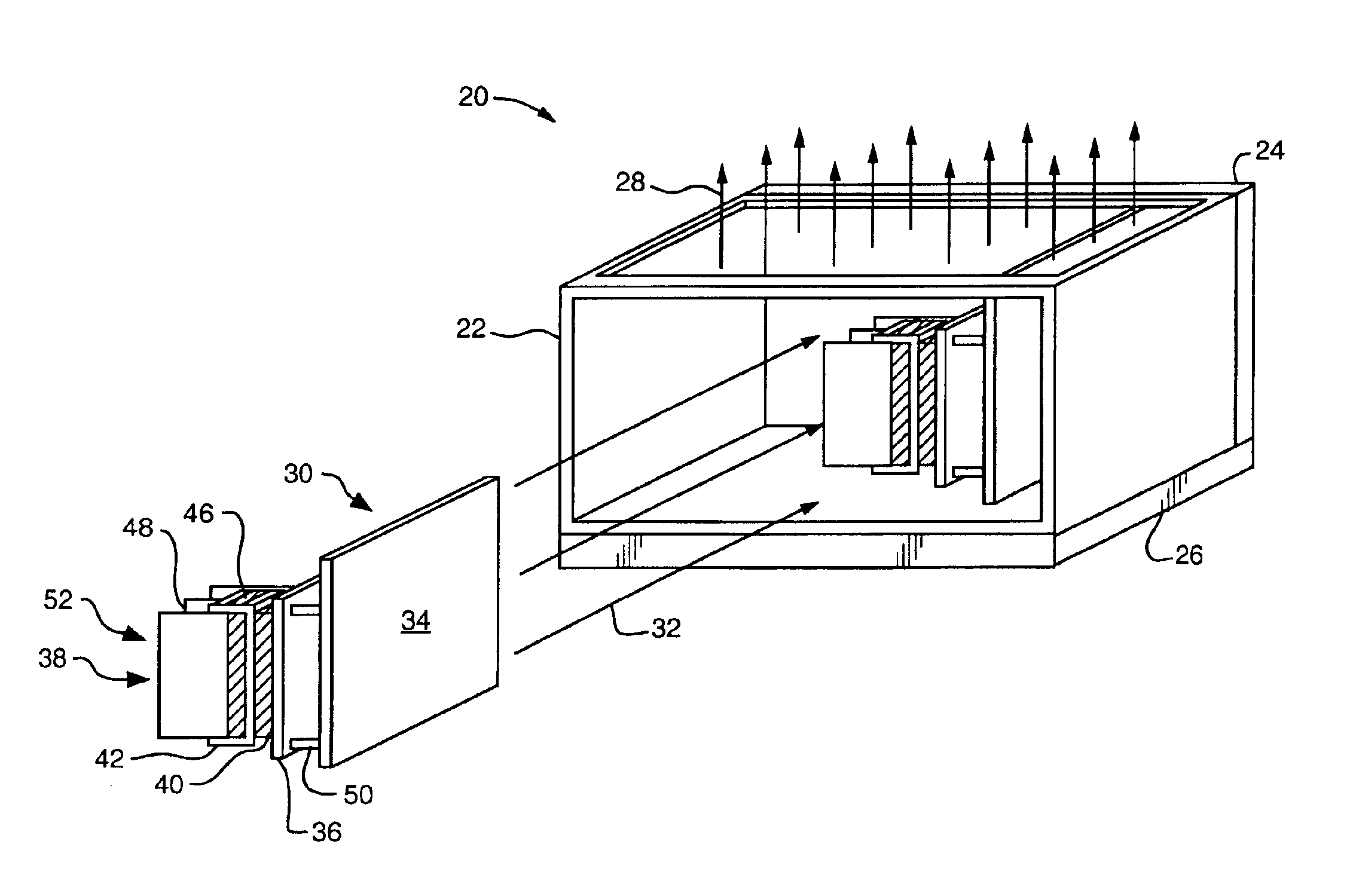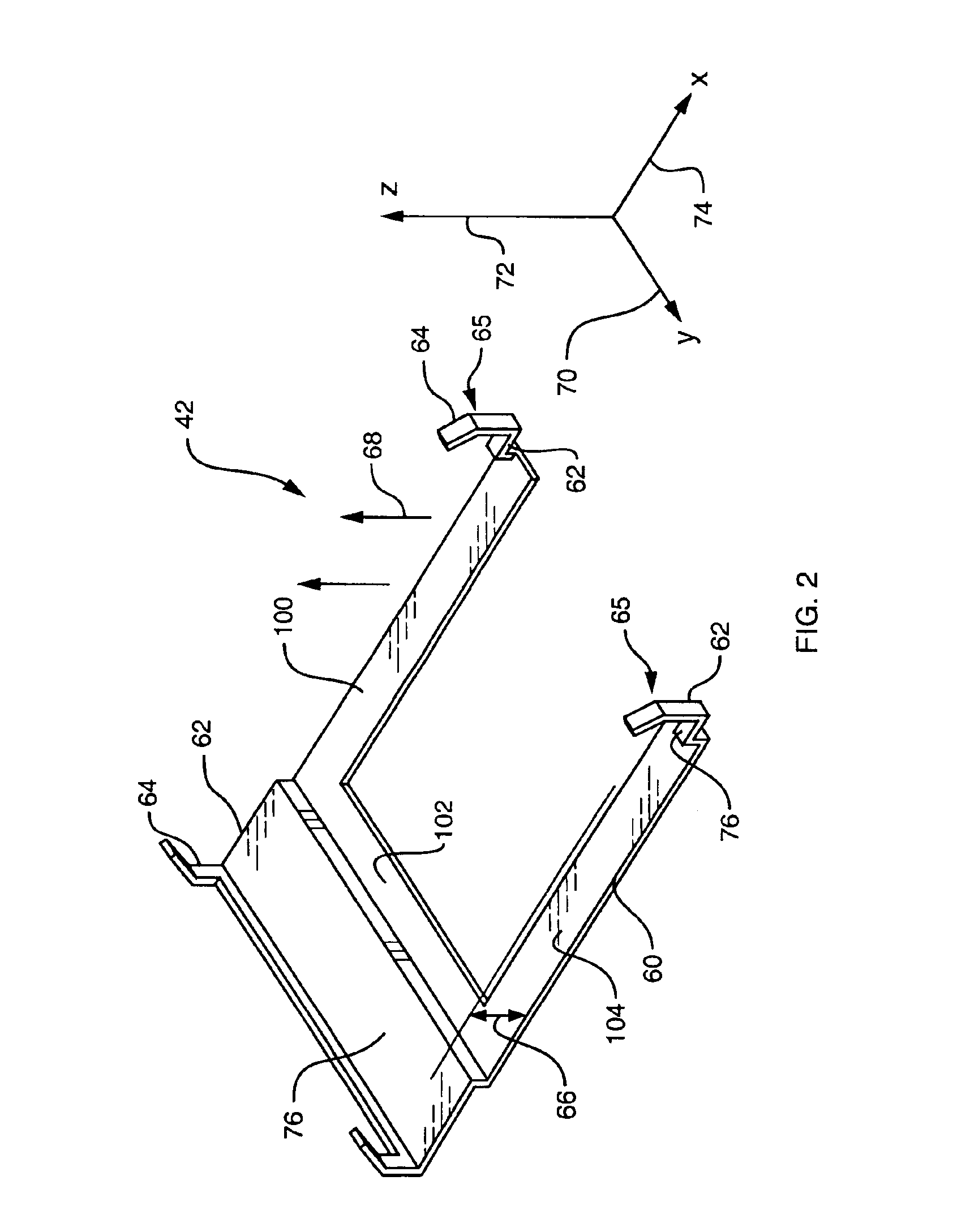Methods and apparatus for attaching a heat sink to a circuit board component
a technology of circuit board components and heat sinks, which is applied in the direction of cooling/ventilation/heating modifications, semiconductor devices, semiconductor/solid-state device details, etc., can solve the problems of overheating and malfunction of the circuit board component, the adhesive properties of conventional thermally conductive adhesives degrade over time, and the gaps in conventional techniques for securing heat sinks to circuit boards. , to achieve the effect of minimizing the potential of the retainer, increasing the contact surface area
- Summary
- Abstract
- Description
- Claims
- Application Information
AI Technical Summary
Benefits of technology
Problems solved by technology
Method used
Image
Examples
Embodiment Construction
Embodiments of the present invention provide mechanisms for securing a heat sink to a circuit board component. A retainer directly attaches to the circuit board component and to the heat sink and secures the circuit board component to the heat sink. The retainer provides a mechanical attachment between the heat sink and the circuit board component. Such mechanical attachment maintains thermal communication between the heat sink and the circuit board component in the absence of a thermally conductive adhesive between the heat sink and the circuit board component for the operational life of the circuit board component. Furthermore, because the retainer attaches directly to the circuit board component and to the heat sink, the retainer minimizes the necessity for use of mounting holes in the circuit board associated with the circuit board component to secure the heat sink to the circuit board component.
FIG. 1 shows a computer system 20, suitable for use of the invention. The computer s...
PUM
 Login to View More
Login to View More Abstract
Description
Claims
Application Information
 Login to View More
Login to View More - R&D
- Intellectual Property
- Life Sciences
- Materials
- Tech Scout
- Unparalleled Data Quality
- Higher Quality Content
- 60% Fewer Hallucinations
Browse by: Latest US Patents, China's latest patents, Technical Efficacy Thesaurus, Application Domain, Technology Topic, Popular Technical Reports.
© 2025 PatSnap. All rights reserved.Legal|Privacy policy|Modern Slavery Act Transparency Statement|Sitemap|About US| Contact US: help@patsnap.com



